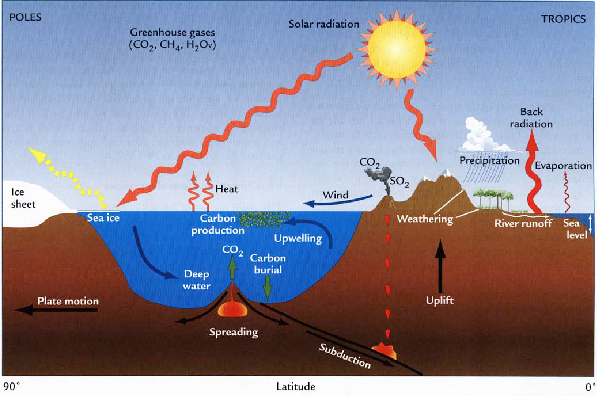Climate is the average and variations of weather in a region over long periods and of time. It is the result of interactions between its five components or spheres: Atmosphere, Hydrosphere, Cryosphere, Biosphere, Lithosphere

Climate displays natural and anthropogenic oscillations. The natural oscillations include the Milankovitch Cycles, the multidecadal (sometimes called pentadecadal, and linked for example to ecosystems such as global fish population Global multidecadal ocean climate and small-pelagic fish population the interdecadal, the quasi-decadal (see Patterns of coherent decadal and interdecadal climate signals in the Pacific Basin during the 20th century ), the interannual (mainly ENSO, i.e., El Nino and La Nina, see “La musique des spheres: le climat au XXe siecle”.
Climate oscillations and change may affect vectorborne diseases (mosquitoes, flies,ticks, phlebotomes…) by influencing the reproductive success of the vectors and by altering incubation periods and/or the larvals enrinonmental niches.
For example, warmer air temperatures shorten the time needed for the virus responsible for Dengue fever to become activated within its mosquito host. On the other hand, hot temperatures can also reduce the survival of mosquitoes and ticks.
Warmer oceans conditions correlate with increased populations of some micro-organisms associated with waterborne diseases, such as the Vibrio cholerae bacterium, which causes cholera. In addition, rainfall and flooding (which result in the watery habitats optimal for certain disease vectors and micro-organisms) and runoff (which can transport pathogens from the feces of infected pasture animals) may also cause increased transmission of diseases among humans.
Some airborne diseases are believed to be affected by climate and weather conditions, as evidenced by their seasonal nature. For example, meningococcal meningitis (spinal meningitis) occurs in sub-Saharan Africa most frequently during the dry season from December through June
